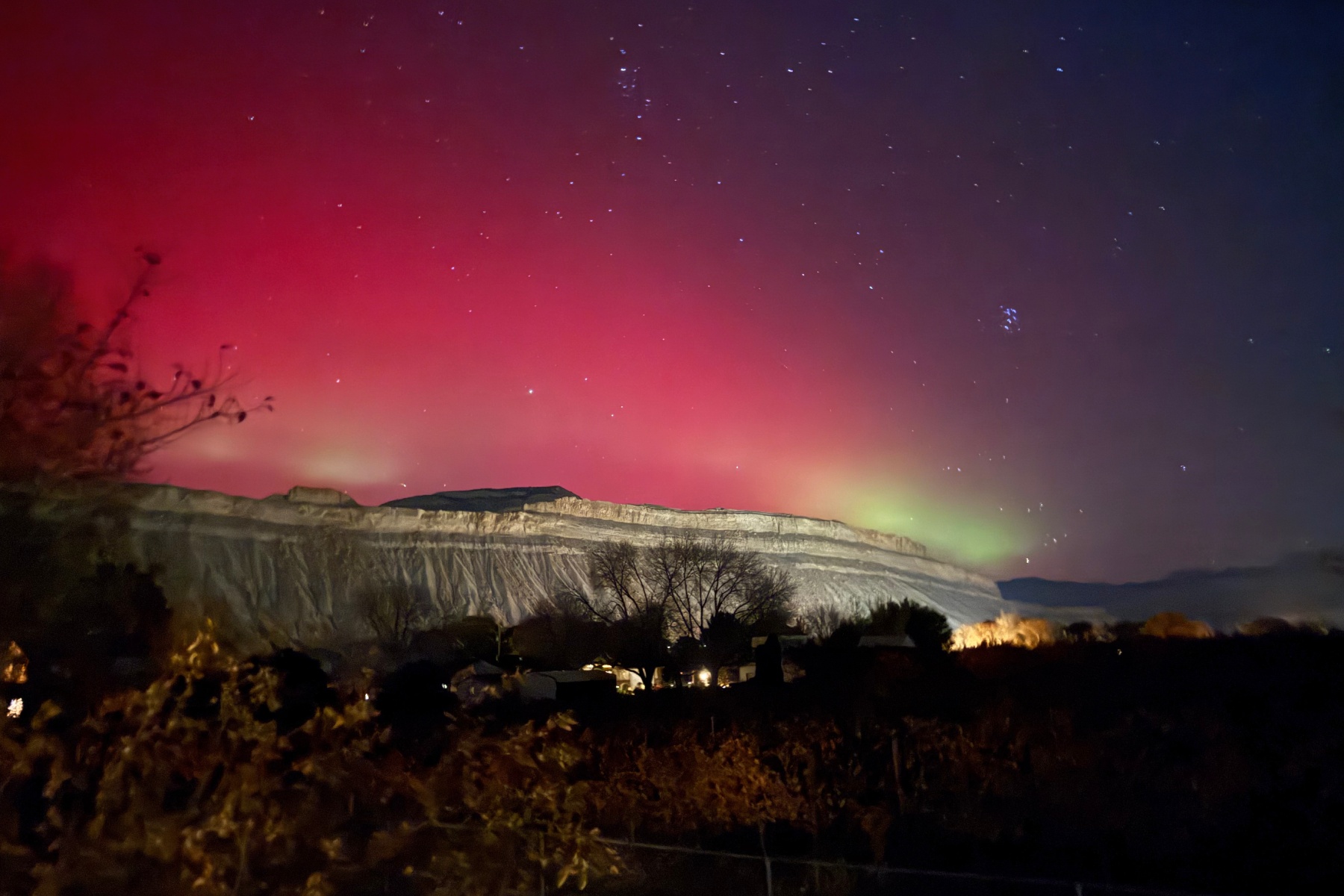The Sky Ignites: An Unforgettable Celestial Ballet Across America
The night sky over the United States recently transformed into an ethereal canvas, painted with vibrant hues of green and pink as the aurora borealis, or Northern Lights, made a stunning and unexpected appearance. This isn’t your typical polar spectacle; instead, residents from Colorado to Florida were left awestruck, witnessing a phenomenon usually reserved for the high latitudes.
On Tuesday, November 11, what began as whispers quickly turned into a nationwide buzz as cameras and smartphones captured the impossible. Across dozens of states, skies that normally twinkle with familiar stars erupted in a silent, cosmic dance. The vivid displays were a stark reminder of the dynamic forces at play far beyond our atmosphere, beckoning us to look up and marvel.
The Science Behind the Sky Show: When the Sun Kisses Earth’s Atmosphere
Such widespread aurora sightings are not a mere coincidence; they are the direct consequence of powerful geomagnetic storms. These storms originate from the Sun, specifically from solar flares or coronal mass ejections (CMEs) that hurl plasma and magnetic fields into space. When these energetic particles collide with Earth’s magnetosphere, they interact with atmospheric gases, exciting them and causing them to emit light – the aurora.
“To witness the aurora borealis so far south is a truly rare event, a testament to the sheer power of the recent solar activity. It challenges our common understanding of where and when these displays occur,” stated Dr. Evelyn Reed, a renowned astrophysicist.
- Solar Wind Intensity: The speed and density of the solar wind carrying charged particles.
- Earth’s Magnetic Field: The strength and orientation of our planet’s protective shield, which funnels particles towards the poles.
- Kp-Index: A geomagnetic activity index, indicating the disturbance level of Earth’s magnetic field. High Kp values (like those recently observed) correlate with southern aurora visibility.
- Atmospheric Composition: Different gases (oxygen, nitrogen) at varying altitudes produce the characteristic green, pink, and red hues.
From Orbit to Our Eyes: NOAA’s Unseen Perspective
While millions on the ground gazed upward, instruments orbiting above offered an unparalleled view. The National Oceanic and Atmospheric Administration (NOAA) captured breathtaking images of the glowing auroras from orbit, providing scientists with critical data. These satellite observations are invaluable, offering a global perspective on the storm’s intensity and geographic reach, confirming the extraordinary nature of these recent events.
NOAA’s satellite images, such as the one taken on November 14, 2025 (as mentioned in the context), serve as a stark reminder of the constant interplay between our star and our planet. They illustrate the vastness of the phenomenon, showing how the auroral oval, typically confined to the polar regions, swelled and descended to envelop much of the continental U.S.
A Second Chance? What to Expect Tonight
For those who missed the initial spectacle or crave another glimpse, there’s good news. Experts suggest there may be additional opportunities to witness the auroras, potentially even tonight. However, several factors come into play, most notably cloud cover, which can obscure even the most brilliant displays.
- Check Local Forecasts: Clear skies are paramount for aurora viewing.
- Find Dark Locations: Escape city light pollution for optimal visibility.
- Look North (but stay alert): While they are Northern Lights, strong storms can make them visible in all directions.
- Patience is Key: Auroras can be fickle, appearing and fading over time.
- Use a Camera: Many phone cameras are now sensitive enough to capture faint auroras, often revealing colors the naked eye struggles to perceive.
Beyond the Lights: Cultural Significance and Future Gazing
Throughout human history, the aurora borealis has inspired awe, fear, and wonder, weaving its way into myths and legends across diverse cultures. From ancient Norse sagas depicting Valkyries riding across the sky to indigenous folklore of spirits dancing, these lights have always transcended mere atmospheric phenomena, touching the very soul of humanity.
“These cosmic events remind us of our tiny place in a vast, dynamic universe, yet also of our profound connection to its mysteries. They challenge us to reconcile the scientific explanation with the inexplicable beauty we behold.”
The recent widespread sightings serve as a powerful reminder of nature’s unpredictable grandeur. As solar activity continues its cyclical ebb and flow, scientists will refine their predictions, but the sky will always hold the capacity to surprise us, offering fleeting moments of celestial magic that connect us all under one vast, glowing canopy.


